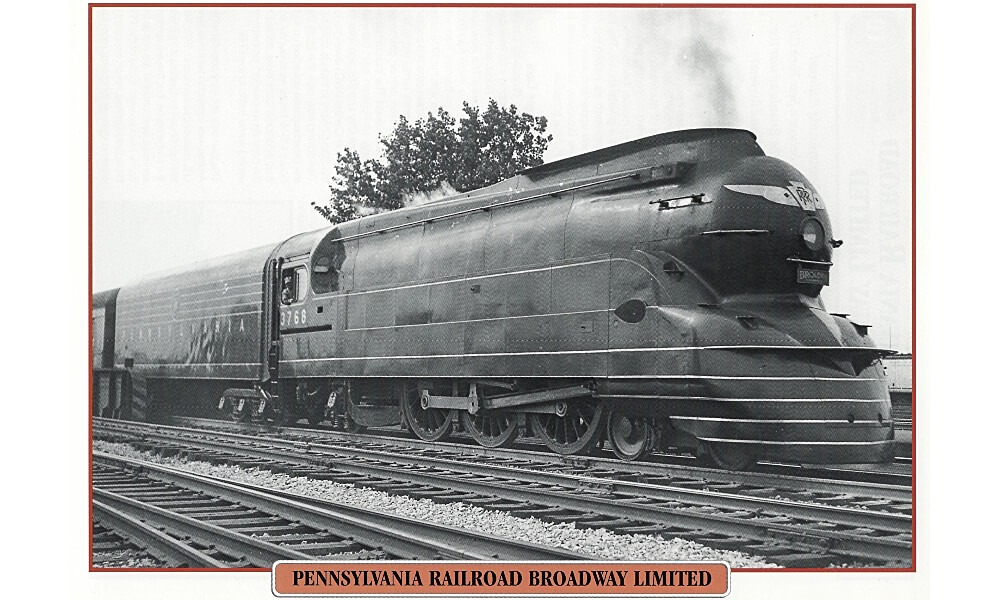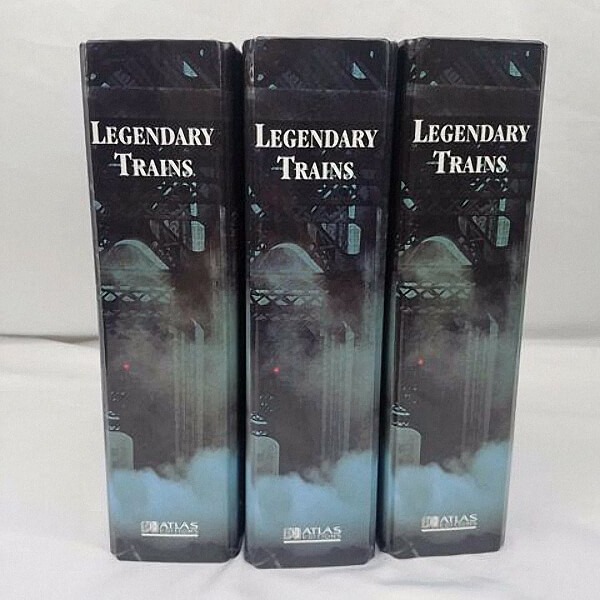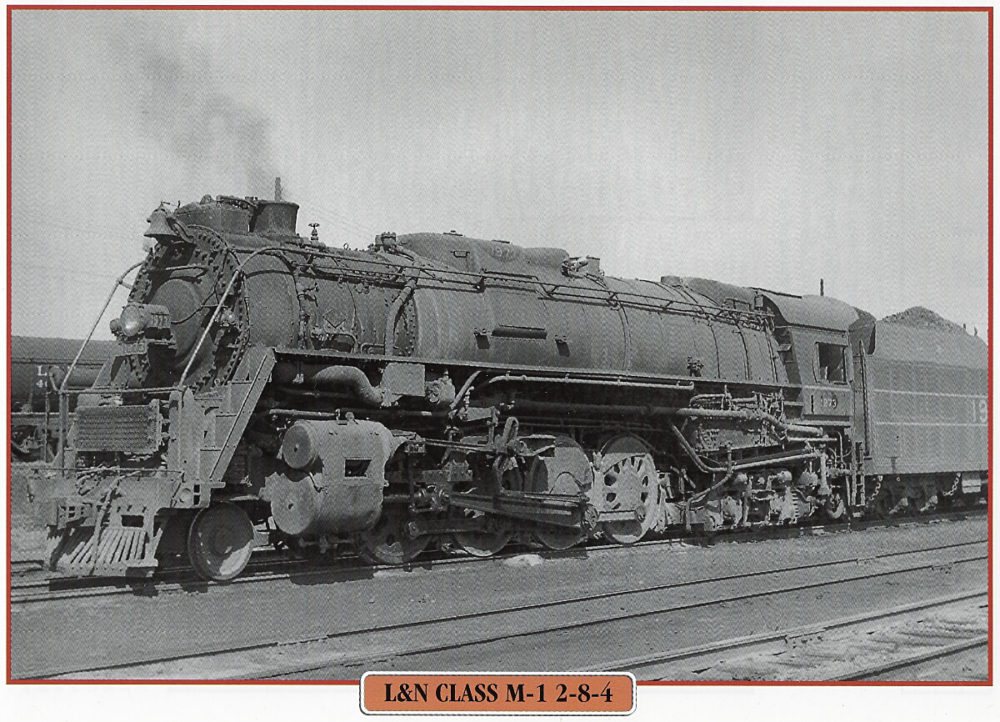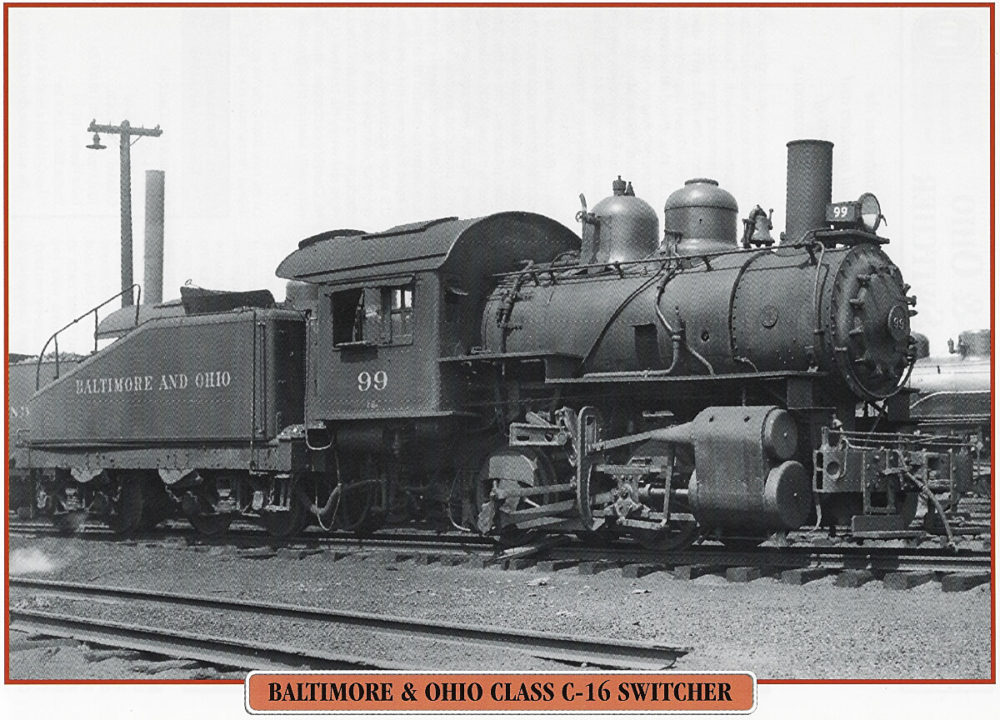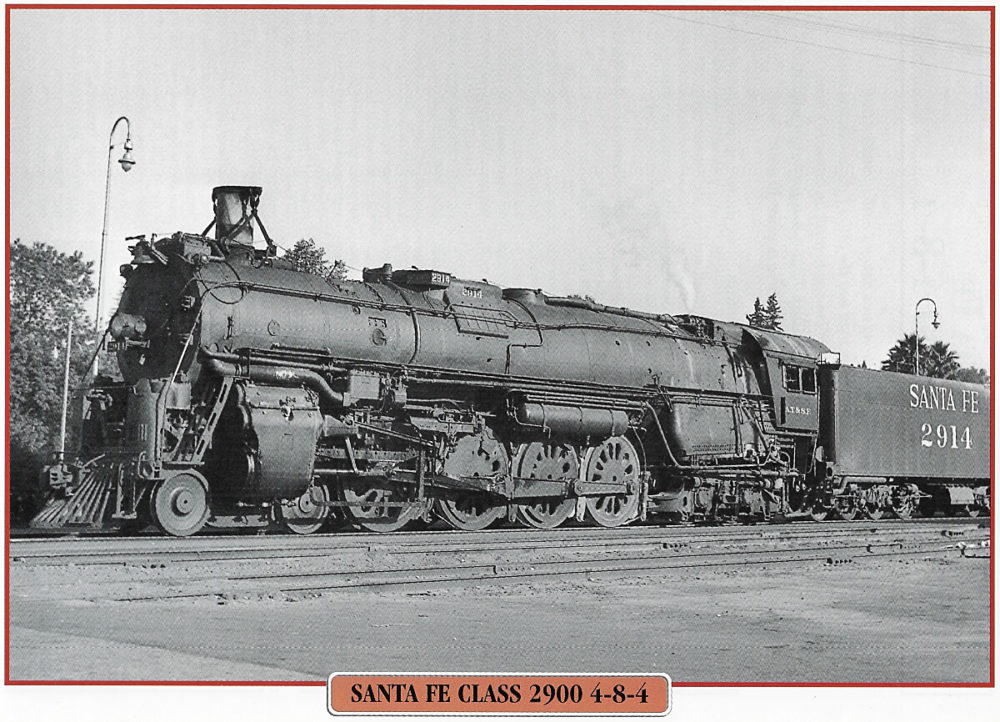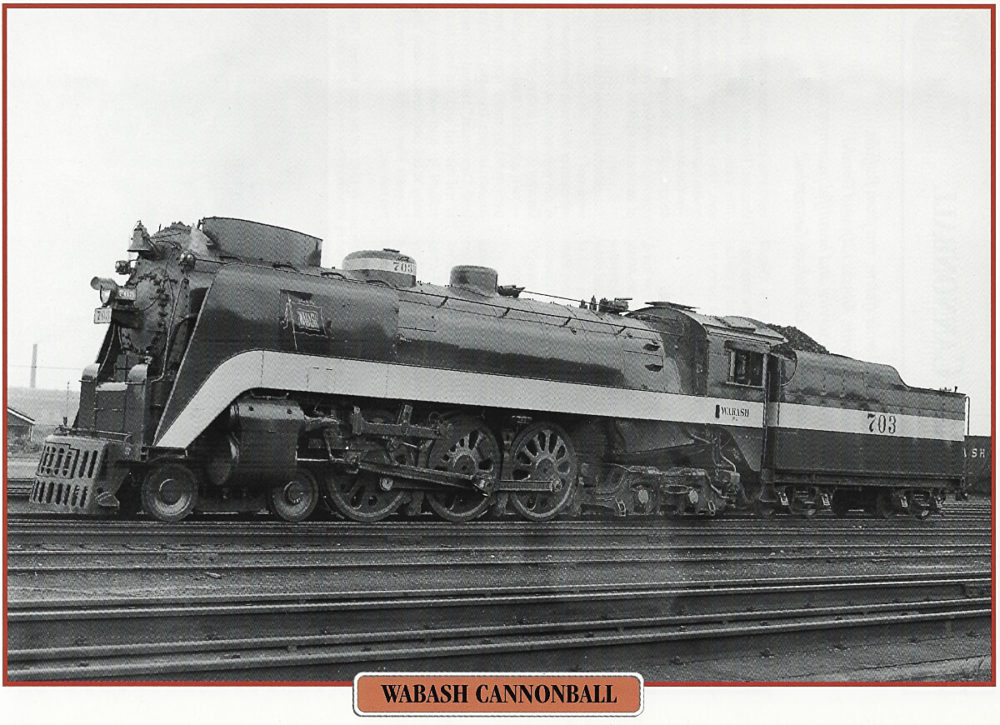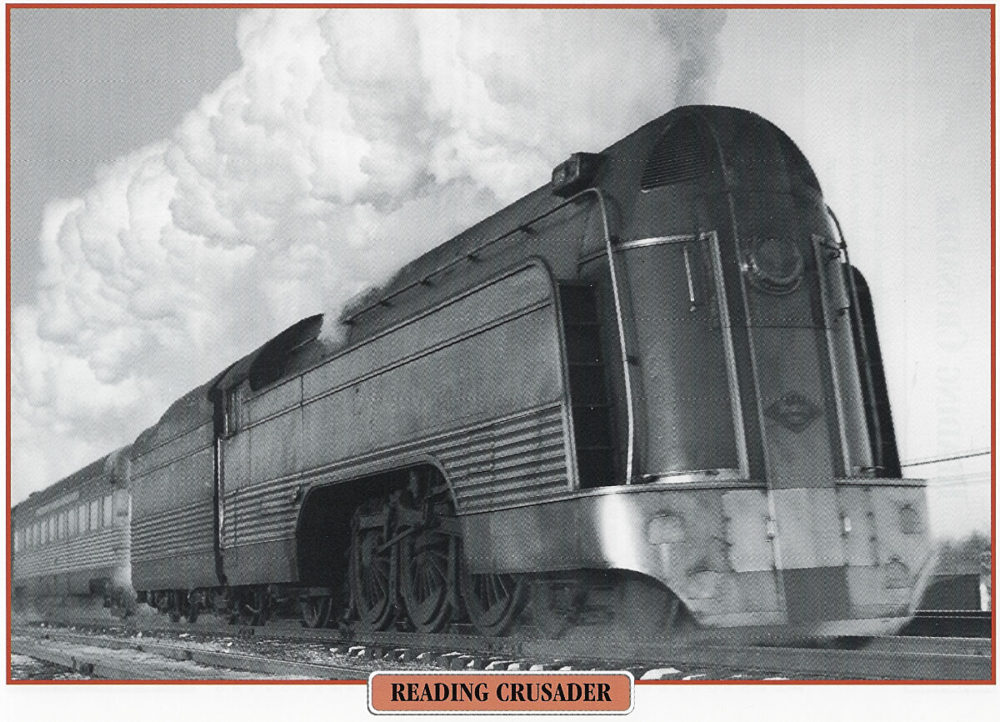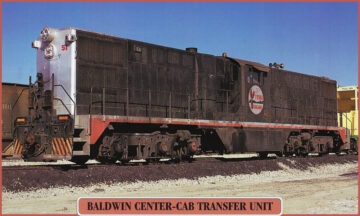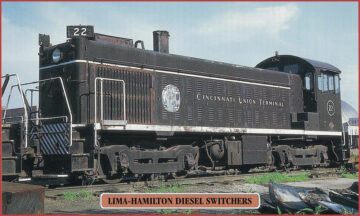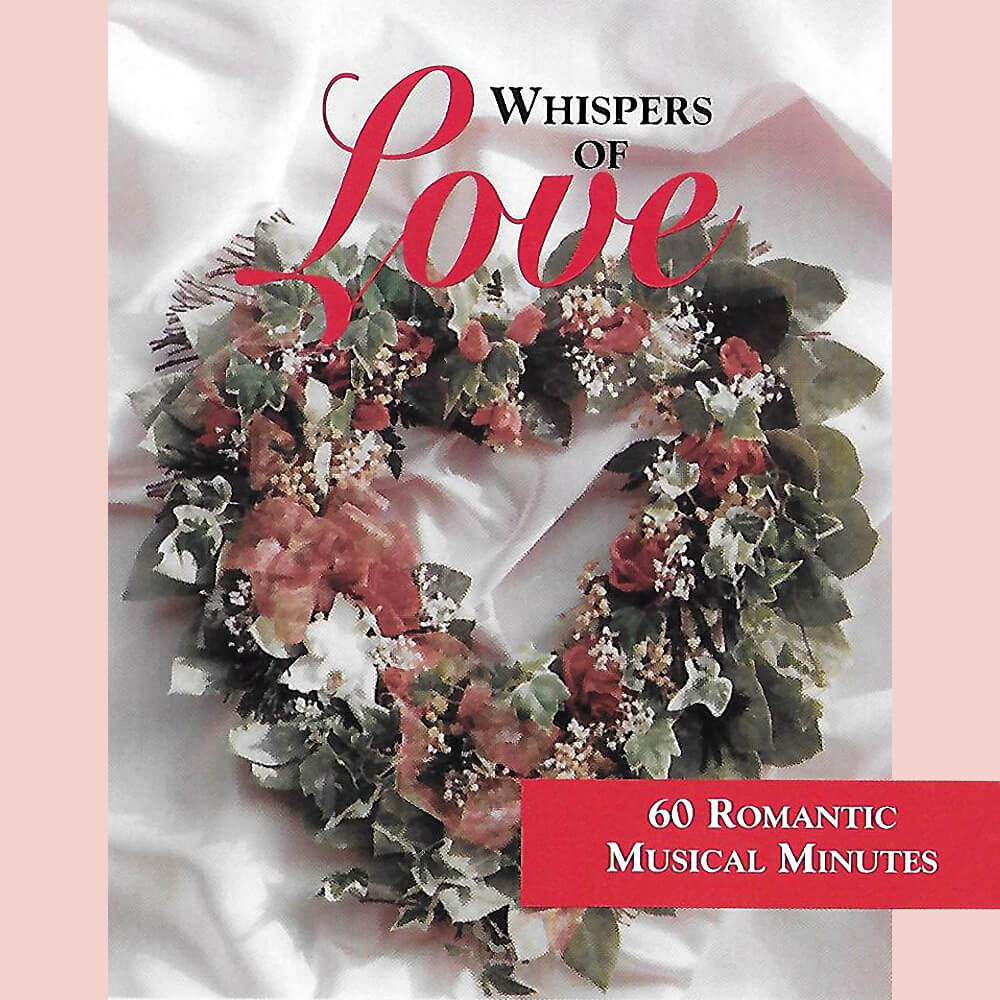The Pennsylvania’s Broadway Limited was one of two luxury trains which competed for passengers on the route between New York City and Chicago … it’s rival was the New York Central’s 20th Century Limited. The Broadway was an all-Pullman train, traveling via Philadelphia and Pittsburgh and making the trip in as little as 16 hours.
On display here are re-prints of photos of 10 steam locomotives — all considered legendary for one reason or another — which were operational on American rails during the Second World War years … which some say were the “glory days” of steam railroading. If you were not around at that time or haven’t read much on rail history, the railroads were vital to the war effort, transporting both military materials and troops across the nation to ports on both coasts, taxing both equipment and crews to the max.
These photos are from a set of three three-ring binders which was published in 1998 by a European-based company named Atlas Editions and titled as you see, Legendary Trains. The set contains more than 500 glossy-surfaced cards, each with one of these photos on the front and information about the railroad and train/locomotive on the reverse. Grouped in 16 chapters, the photos and stories are of trains from around the world. Long out of print, there appears to be a few copies available from Amazon and eBay.
This is one of three being displayed here which I place in the “brute” category, although that may not be a perfect description. In simple terms, they are big and powerful, built for one purpose … to drag heavy loads! The C&O ordered 10 of this locomotive — considered one of the finest steam locomotives ever built — and received delivery just as the United States was entering the War in late 1941.
If you are not familiar with steam locomotives and their various types, based primarily on wheel configuration, these began a new type named the Allegheny because of where they’d primarily be operating … the mountains of West Virginia and pulling coal trains, featuring a wheel configuration of 2-6-6-6. The first and last numbers are for the leading and trailing trucks, whose primary purpose is helping support the tremendous weight of the unit. The number or numbers in between denote the number of driving wheels, the big ones in the middle. Most steam locos had only one set of driving wheels, but this C&O Class H-8, being among the largest ever built, had two sets. What made this design stand out and receive a new designation was that its trailing truck had — due to the weight it was called on to support — six wheels instead of the normal two or four.
Having its origins dating to the beginning of the 20th century, the New York Central’s 20th Century Limited is generally considered the most famous passenger train in the United States, being looked upon as the rail industry’s premier luxury train … and, like the PRR’s Broadway Limited, traveled between New York City and Chicago, following the Central’s Water Level Route via Albany and Buffalo.
The L&N, the Louisville & Nashville Railroad, was founded in 1855 to build a rail line between its two namesake cities. From its beginnings, it was one of the more conservative of North American rail companies … and surprising many when, in the early 1940’s, it acquired 42 of these locomotives, which were larger and more powerful than any it owned previously. This model unit, which had taken on the nickname of “Big Emma,” was so successful for the railroad, that with growing traffic demands of The Second World War, more units were purchased and all served well in both freight and passenger service until fully replaced by diesel locomotives in the mid-1950’s.
By far the oldest locomotive in the group being shown and discussed here is this small switching unit built by the Baltimore & Ohio in its own shops in Baltimore … it and its three sisters going into service in 1912 to serve only one purpose. As was the case in many older cities, not only were there trolley tracks in the streets, railroads had tracks for reaching customers located within the city … which was the situation on Pratt Street, one of Baltimore’s main streets. This street track was light weight and contained many sharp curves leading into spurs and sidings, which most locomotives could not handle. Hence, the B&O designed this small, four-wheel unit to handle this task. Later, with two of these locos easily handling the Baltimore work, the other two were sent to Philadelphia’s waterfront rail yard, where a similar situation existed. By the end of The Second World War, all four of these switchers had been retired and replaced by diesel units.
A side note: By 1950, the rail industry’s move to diesel power was well under way; however, the B&O still had 1677 steam locomotives on its roster vs. only 373 diesels.
With the arrival of the Second World War, the Santa Fe Railroad, which had an outstanding route from the Midwest to Los Angeles, was rapidly overwhelmed with increased traffic. In an effort to relieve the logjam, the U. S. Government’s War Production Board allocated a significant group of diesel locomotives to the Santa Fe, but they were not sufficient for the railroad’s needs. So, the Santa Fe was authorized to purchase 30 of these 4-8-4’s for use in freight service. However, these big machines were delivered as dual-service locomotives, meaning they were equipped with “head-end” capability for supplying the needs of passenger coaches. It wasn’t long before many were pulling long troop trains, express mail and fast passenger runs.
The Black Diamond Express, the Lehigh Valley Railroad’s premier passenger train, was introduced in 1896 running between Jersey City, New Jersey and Buffalo, New York. From the start, the service had its up’s and down’s, as it competed with the New York Central and Lackawanna for passengers between the two terminals, and suffered from having longer route miles.
It did get a break in 1918, when trains were re-routed through the Pennsylvania Railroad tunnel under the Hudson River directly into New York City’s Penn Station, eliminating the need for passengers to take a ferry to cross the river.
In the late 1930’s, industrial designer Otto Kuhler was brought in to cosmetically restyle the Lehigh Valley’s passenger equipment, including streamlining three 4-6-2 locomotives — as seen here — and applying a modernistic paint scheme to all. The “new look” Black Diamond entered service in 1940 … and passenger traffic soon saw growth. Then, with the onset of war, the train’s patronage increased dramatically.
The Wabash Railroad was founded prior to the Civil War and by 1898 had assumed its final form of a 2000-mile system, stretching from Buffalo, New York to Omaha, Nebraska; however, its primary markets would be Detroit, Chicago, St. Louis and Kansas City. The Wabash gained its reputation through its fast freight service and attractively painted passenger trains. These semi-streamlined 4-6-4 locomotives pulled the Wabash’s express train that provided direct daily between Detroit and Saint Louis — which happened to be named the Cannonball — through the war years, but would be replaced by ALCO diesel power in 1949.
There was nothing particularly distinctive or unique about the Wabash Cannonball as a train … other than the fact that someone wrote a song about, that’s still sung today, which brought it a certain “celebrity” status. Here’s my old friend Boxcar Willie singing it at WSM’s Grand Ole Opry:
As noted above, during The Second World War, the government’s War Production Board placed great restrictions on construction of new locomotives, and consideration was based on the railroad’s importance to the war effort. The Missouri Pacific Railway, which had important routes which fanned out from St. Louis to Colorado and Texas, saw its traffic double once America entered the War, leaving it desperately short on locomotive power. These 4-8-4’s, dubbed “war babies” because of timing and use, were based on a 1938 design built by Baldwin Locomotive Works for the Denver & Rio Grande Western. Capable of climbing the steep grades of the Mountain West as well as moving fast across flatter ground, including hauling heavy oil trains from the Gulf Coast region to the Northeast, they were perfect for MoPac’s needs.
The Reading Company’s streamlined Crusader express service was introduced in 1937 and ran between Philadelphia and Jersey City, New Jersey. As with most other streamlined steam locomotives, under this beautiful stainless-steel “shroud” is a standard-looking 4-6-2 locomotive built in 1918. While there were two of these special Crusader locomotives, there was only one five-car set of stainless-steel passenger equipment, built for the Reading by the Budd Company. What made this set unique was that it was bi-directional, having a rounded-end observation car on each end … and the side panels of the locomotive tender extended past the rear end of the tender so that it enveloped the rounded end of the observation car which happened to be at the “front” end, giving the entire train a smooth-sided slick appearance. While the steam power would be replaced by Model FP-7 diesels in 1950 and the entire car set being sold to Canadian National in 1964, the Crusader service would continue into Amtrak days, finally being canceled in 1981.
Before I close, I must tell you that I feel a very personal connection to the Crusader, as from early 1939 through the end of The Second World War, I would live just a few hundred feet across a field from the Reading main line which carried the Crusader plus electrified multiple-unit commuter trains along with freight from Philadelphia to West Trenton, New Jersey, and on up into central New Jersey where the Reading connected with the Central Railroad of New Jersey for the trip to Jersey City. It would pass my family home just north of the Philadelphia city line four times each day. I would see at least one of those passing’s several days each week.
If you’ve read my memoir, RADIO … My Love, My Passion, you likely know this fact. However, if not, visit my Musings from March 29, 2018 and see if you see a similarity between this Crusader photo and the Savoy Express locomotive in the XM Radio’s 40’s Channel logo!
Image Credits: Broadway Limited – Collection of Harold K. Vollrath, C&O 2-6-6-6 – Collection of Kenneth M. Ardinger, 20th Century Limited – J. W. Swanberg Collection, L&N 2-8-4 – Collection of Kenneth M. Ardinger, B&O Switcher – Collection of Harold K. Vollrath, Santa Fe 4-8-4 – Collection of Kenneth M. Ardinger, Black Diamond Express – Collection of Kenneth M. Ardinger, Wabash Cannonball – Collection of Harold K. Vollrath, MoPac "War Baby" – James J. Buckley, Reading Crusader – Collection of Harold K. Vollrath
